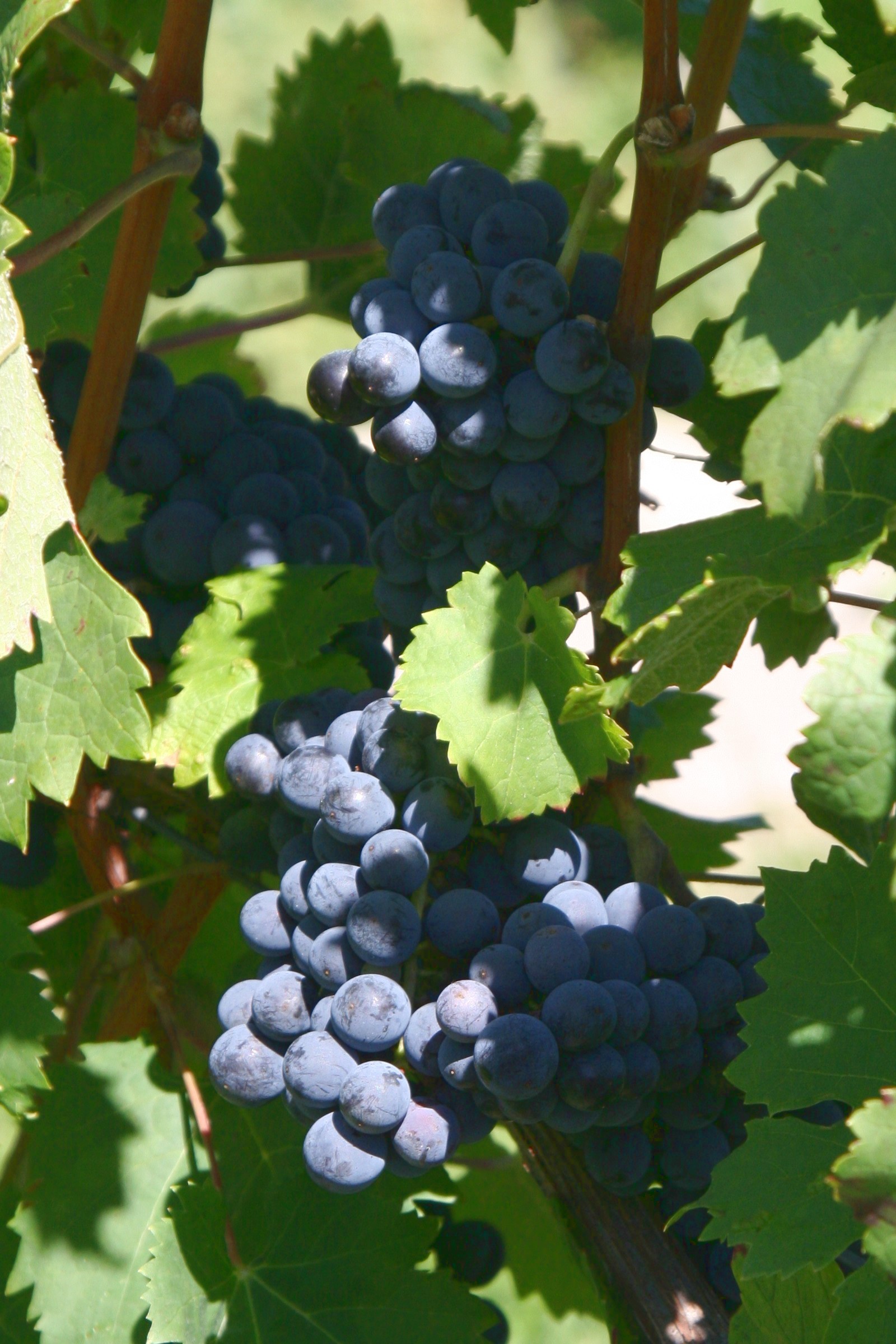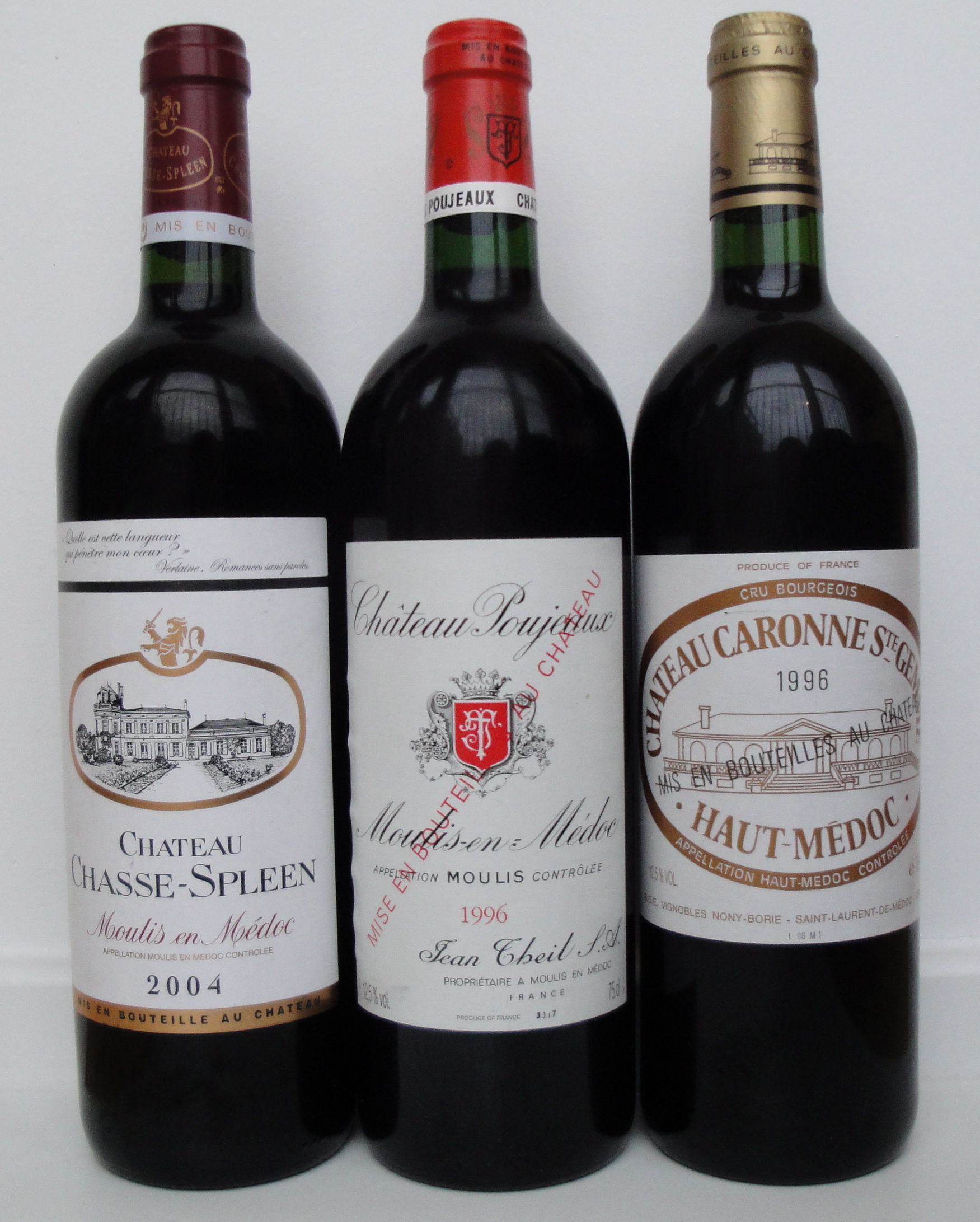|
Château Les Ormes-de-Pez
Château Les Ormes-de-Pez, or Château Ormes de Pez, ( French for ''The Elms of Pez'') is a winery in the Saint-Estèphe appellation of the Bordeaux wine region of France, near the hamlet of Pez. The wine produced here was classified as one of 9 '' Cru Bourgeois Exceptionnels'' in the 2003 listing. Though this classification is currently annulled, it is expected to be revived by the 2009 vintage, but without use of the quality divisions such as ''"exceptionnel"''. History The Château and buildings date from 1792, constructed after the division and sale of Château de Pez as a result of the French Revolution. During the 19th century it was owned by Marcel Alibert, also the owner of Château Belgrave, until it was sold in 1927 to the ''Société Civile du Haut Médoc''. Financial trouble forced the estate to be sold on to Jean-Charles Cazes in 1930, who passed it on to his son André Cazes. To date the estate is owned by the Cazes family, also owners of Château Lynch-Bages.H. ... [...More Info...] [...Related Items...] OR: [Wikipedia] [Google] [Baidu] |
French Language
French ( or ) is a Romance languages, Romance language of the Indo-European languages, Indo-European family. Like all other Romance languages, it descended from the Vulgar Latin of the Roman Empire. French evolved from Northern Old Gallo-Romance, a descendant of the Latin spoken in Northern Gaul. Its closest relatives are the other langues d'oïl—languages historically spoken in northern France and in southern Belgium, which French (Francien language, Francien) largely supplanted. It was also substratum (linguistics), influenced by native Celtic languages of Northern Roman Gaul and by the Germanic languages, Germanic Frankish language of the post-Roman Franks, Frankish invaders. As a result of French and Belgian colonialism from the 16th century onward, it was introduced to new territories in the Americas, Africa, and Asia, and numerous French-based creole languages, most notably Haitian Creole, were established. A French-speaking person or nation may be referred to as Fra ... [...More Info...] [...Related Items...] OR: [Wikipedia] [Google] [Baidu] |
Château Belgrave
Château Belgrave () is a winery in the Haut-Médoc appellation of the Bordeaux region of France. The wine produced here was classified as one of eighteen ''Cinquièmes Crus'' (Fifth Growths) in the Bordeaux Wine Official Classification of 1855. At the time of classification, the winery was called Château Coutenceau. The "Bellegrave" designation first appeared in 1845, when Bruno Devès, a negociant in Bordeaux, remodelled the estate, favoring wine growing on gravel terroirs. Château Belgrave: History , accessed on September 11, 2013 Château Belgrave is located in the commune Saint-Laurent-Médoc, immediately to the west of the border with [...More Info...] [...Related Items...] OR: [Wikipedia] [Google] [Baidu] |
Merlot
Merlot ( ) is a dark-blue-colored wine grape variety that is used as both a blending grape and for varietal wines. The name ''Merlot'' is thought to be a diminutive of , the French name for the blackbird, probably a reference to the color of the grape. Its softness and "fleshiness", combined with its earlier ripening, make Merlot a popular grape for blending with the sterner, later-ripening Cabernet Sauvignon, which tends to be higher in tannin. Along with Cabernet Sauvignon, Cabernet Franc, Malbec, and Petit Verdot, Merlot is one of the primary grapes used in Bordeaux wine, and it is the most widely planted grape in the Bordeaux wine regions. Merlot is also one of the most popular red wine varietals in many markets. This flexibility has helped to make it one of the world's most planted grape varieties. As of 2004, Merlot was estimated to be the third most grown variety at globally.J. Robinson (ed) ''The Oxford Companion to Wine'' Third Edition, Oxford University P ... [...More Info...] [...Related Items...] OR: [Wikipedia] [Google] [Baidu] |
Cabernet Franc
Cabernet Franc is one of the major black grape varieties worldwide. It is principally grown for blending with Cabernet Sauvignon and Merlot in the Bordeaux (wine), Bordeaux style, but can also be vinified alone, as in the Loire (wine), Loire's Chinon wine, Chinon. In addition to being used in blends and produced as a varietal in Canada (wine), Canada, Lake Erie AVA, Lake Erie AVA in Pennsylvania, and across the United States (wine), United States and Argentina, it is sometimes made into ice wine in those regions. Cabernet Franc is lighter than Cabernet Sauvignon, making a bright pale red wine that contributes finesse and lends a Black pepper, peppery perfume to blends with more robust grapes. Depending on the growing region and style of wine, additional Aromas (wine), aromas can include tobacco, raspberry, bell pepper, Blackcurrant, cassis, and Viola (plant), violets. Records of Cabernet Franc in Bordeaux go back to the end of the 18th century, although it was planted in Loire ... [...More Info...] [...Related Items...] OR: [Wikipedia] [Google] [Baidu] |
Cabernet Sauvignon
Cabernet Sauvignon () is one of the world's most widely recognized red wine grape varieties. It is grown in nearly every major wine producing country among a diverse spectrum of climates from Australia and British Columbia, Canada to Lebanon's Beqaa Valley. This grape variety appeared in France in the 17th century as a result of natural crossbreeding. Its popularity is often attributed to its ease of cultivation—the grapes have thick skins and the vines are hardy and naturally low yielding, budding late to avoid frost and resistant to viticulture hazards. The classic profile of Cabernet Sauvignon tends to be full-bodied wines with high tannins and noticeable acidity that contributes to the wine's aging potential. In cool areas, it has flavors of blackcurrant and green pepper; in warmer places, it may taste like black cherry and olive; in very hot climates, it can have a jammy flavor. History and origins For many years, the origin of Cabernet Sauvignon was not cl ... [...More Info...] [...Related Items...] OR: [Wikipedia] [Google] [Baidu] |
Jean-Michel Cazes
Jean-Michel Cazes (25 March 1935 – 28 June 2023) was a French winemaker and insurance executive. He managed the wine holdings of AXA Millésimes until 2000, the family insurance agency, and the Cazes family estates until 2006. He was the son of André Cazes and grandson of Jean-Charles Cazes who acquired the family's initial holdings. Biography Cazes completed his degree at the École nationale supérieure des mines de Paris (1958) (where he also played Rugby), then earned an M.S. in petroleum engineering at University of Texas (1960) as a Rotary Scholar. He served in the French Air Force (1960–1962), leaving with the rank of lieutenant. He was a sales manager at IBM France (1962–1971) and president of STAD ( Empain-Schneider Group) (1971–1973), both in Paris. In 1973 or 1974 he returned to Pauillac, where his father was the longtime mayor, to manage the family's insurance and wine interests. He took over management of Château Lynch-Bages. Oth ... [...More Info...] [...Related Items...] OR: [Wikipedia] [Google] [Baidu] |
Vinification
Winemaking, wine-making, or vinification is the production of wine, starting with the selection of the fruit, its fermentation into alcohol, and the bottling of the finished liquid. The history of wine-making stretches over millennia. There is evidence that suggests that the earliest wine production took place in Georgia and Iran around 6000 to 5000 B.C. The science of wine and winemaking is known as oenology. A winemaker may also be called a vintner. The growing of grapes is viticulture and there are many varieties of grapes. Winemaking can be divided into two general categories: still wine production (without carbonation) and sparkling wine production (with carbonation – natural or injected). Red wine, white wine, and rosé are the other main categories. Although most wine is made from grapes, it may also be made from other plants. (See fruit wine.) Other similar light alcoholic drinks (as opposed to beer or spirits) include mead, made by fermenting honey and wate ... [...More Info...] [...Related Items...] OR: [Wikipedia] [Google] [Baidu] |
Château Lynch-Bages
Château Lynch-Bages is a winery in the Pauillac appellation of the Bordeaux region of France. Château Lynch-Bages is also the name of the red wine produced by this property. The wine produced here was classified as one of eighteen ''Cinquièmes Crus'' (Fifth Growths) in the Bordeaux Wine Official Classification of 1855. History Thomas Lynch was a descendant of the Tribes of Galway. His father John emigrated in 1691 from Galway, Ireland to Bordeaux, inherited an estate in the village of Bages through his wife, Elizabeth, in 1749. This year represents the foundation of Château Lynch-Bages, which Thomas passed on to his son, Jean-Baptiste, upon his marriage in 1779. Jean-Baptiste soon handed over supervision to his brother Michel who maintained responsibility for the Bages estate until 1824, when the family sold it to a Swiss wine merchant, Sebastien Jurine, who had recently moved to Bordeaux. Château Lynch-Bages remained in the hands of the Jurine family, followed by the Ca ... [...More Info...] [...Related Items...] OR: [Wikipedia] [Google] [Baidu] |
Winery
A winery is a building or property that produces wine, or a business involved in the cultivation and production of wine, such as a wine company. Some wine companies own many wineries. Besides wine making equipment, larger wineries may also feature warehouses, bottling lines, laboratories, and large expanses of tanks known as tank farms. Wineries may have existed as long as 8,000 years ago. Ancient history The earliest known evidence of winemaking at a relatively large scale, if not evidence of actual wineries, has been found in the Middle East. In 2011 a team of archaeologists discovered a 6000 year old wine press in a cave in the Areni region of Armenia, and identified the site as a small winery. Previously, in the northern Zagros Mountains in Iran, jars over 7000 years old were discovered to contain tartaric acid crystals (a chemical marker of wine), providing evidence of winemaking in that region. Archaeological excavations in the southern Georgian region of Kvemo Kartli ... [...More Info...] [...Related Items...] OR: [Wikipedia] [Google] [Baidu] |
Château De Pez
Château de Pez is a vineyard located across the road from Château Calon-Ségur, in the northern parts of Saint Estèphe. Traditionally one of the leading ''Bourgeois Supérieur'' wines of the Médoc, it is believed by some to deserve higher classification. In a 2003 Cru Bourgeois classification revision, it was listed as one of nine ''Cru Bourgeois Exceptionnels''.crus-bourgeois.co2003 Official List.pdf It has a reputation of consistently producing wine that is both inexpensive and good. History Created in 1452 by Jean de Briscos, the de Pez is one of the oldest wine-making estates in the Saint Estephe appellation. The château was owned by the Pontac family, also known for creating Château Haut-Brion in Pessac Leognan, for two centuries. The wine was sold under the Pontac label in London before any other Médoc The Médoc (; ) is a region of France, well known as a wine growing region, located in the '' département'' of Gironde, on the left bank of the Gironde estua ... [...More Info...] [...Related Items...] OR: [Wikipedia] [Google] [Baidu] |
Cru Bourgeois
The Cru Bourgeois classification lists some of the Château#Bordeaux, châteaux from the Médoc that were not included in the Bordeaux Wine Official Classification of 1855, 1855 Classification of ''Crus Classés'', or Classed Growths. Notionally, ''Cru Bourgeois'' is a level below ''Cru Classé'', but still of high quality (formerly there were additional grades of ''Cru Artisan'' and ''Cru Paysan''). Many wine writers consider that there is some overlap in quality between the Classed Growths and the Cru Bourgeois, although also saying that by and large the Classed Growths still represent the best wines. The first Cru Bourgeois list was drawn up by the Bordeaux Chamber of Commerce and Chamber of Agriculture in 1932, selecting 444 estates for the classification. The words ''Cru Bourgeois'' were widely used on labels by the châteaux so listed, although the classification was never officially ratified. A substantial revision of the classification, dividing it into three tiers, was i ... [...More Info...] [...Related Items...] OR: [Wikipedia] [Google] [Baidu] |





